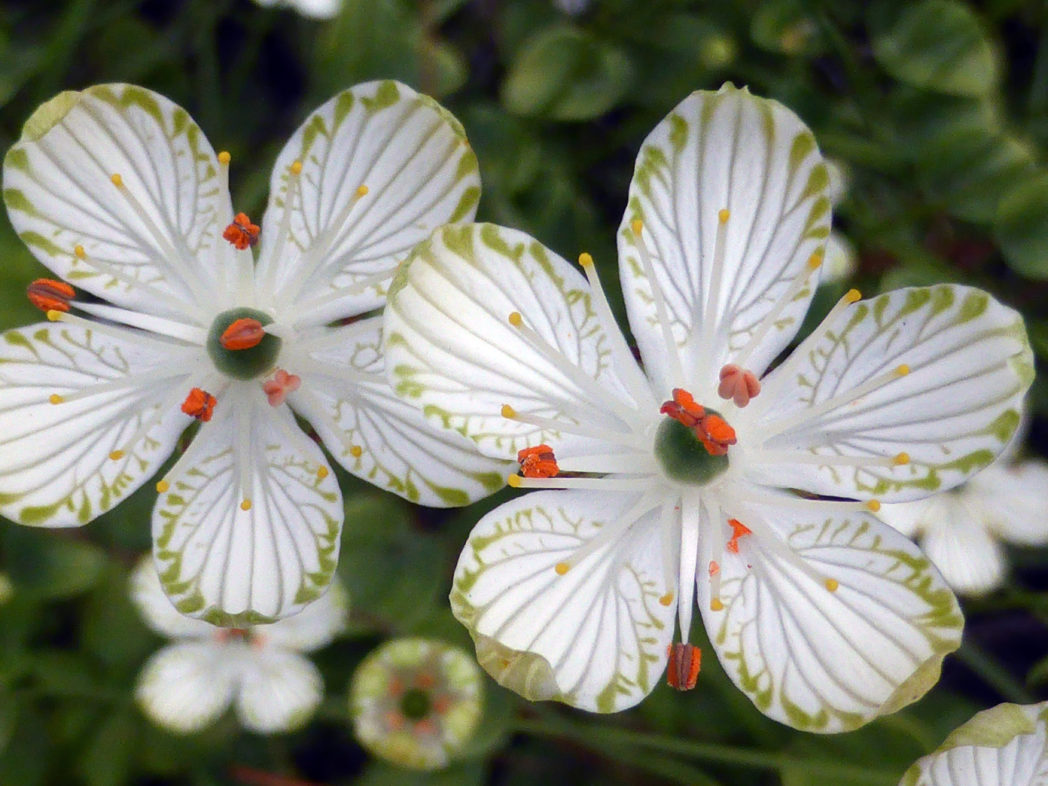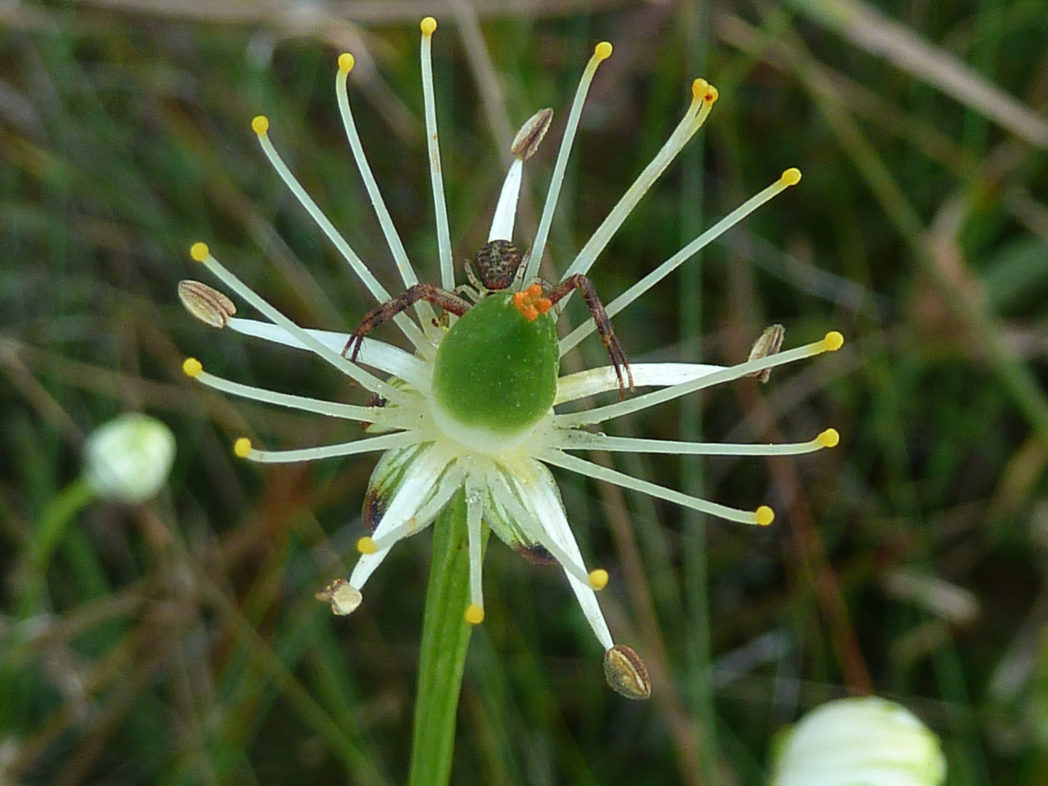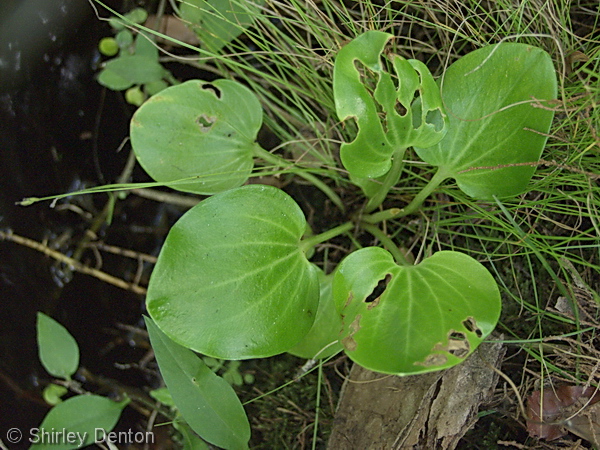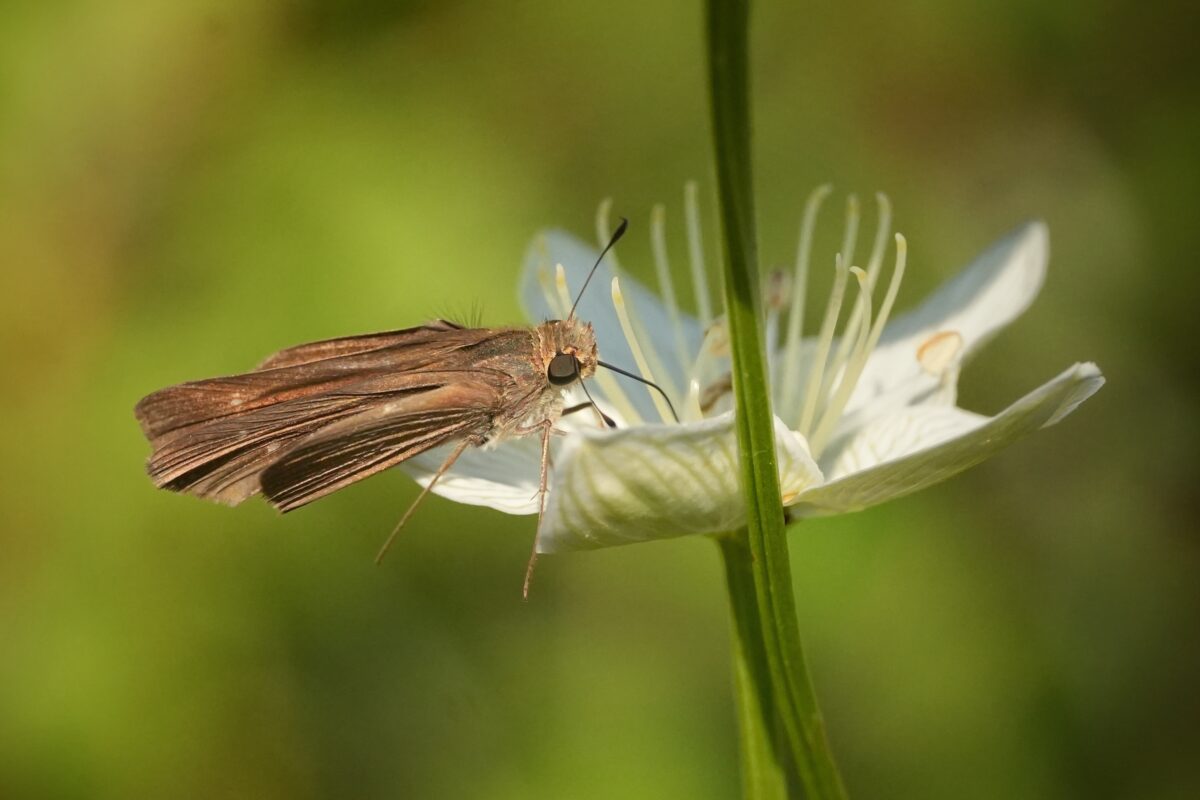Largeleaf grass-of-Parnassus
Pictured above: Largeleaf grass-of-Parnassus (Parnassia grandifolia). Photo by Eleanor Dietrich. Click on terms for botanical definitions. View post as a PDF.
Largeleaf grass-of-Parnassus (Parnassia grandifolia) is a rare and wonderful wildflower. Every part of it is distinctively striking. Its blooms are approximately 1-2″ across and consist of five bright white petals, all with greenish-yellow netting. They surround a relatively large ovary that is also greenish-yellow. Blooms are cupped by white “netted” sepals that are most noticeable once the petals have fallen off. The flower bears 5 fertile stamens and 5 sets of infertile stamens (staminodes). The flower is unique in that, when it opens, the stamens are bent inward over the pistil to prevent self-fertilization. One at a time, each stamen unfolds, releasing its bright orange pollen away from its pistil. Once all the stamens have unfolded, the pistil is now ready to be pollinated by flies and bees who’ve picked up the pollen from other nearby Parnassus specimens. This species must be cross-pollinated in order to produce seed. Flower stalks can be 2–3 feet tall and erect, bearing a solitary bloom. Basal leaves are large, slightly succulent and rounded to kidney-shaped, but are usually obscured by the grasses among which the plant commonly grows.
Largeleaf grass-of-Parnassus blooms only in fall, typically October and November. It occurs naturally in open and seasonally wet savannahs and bogs. It is a state-listed endangered species.
The genus name of Parnassia and the common name grass-of-Parnassus refer to Greece’s Mount Parnassus, home of the Muses and to the Oracle of Delphi. Of its common name reference to grass, it is rumored (but unconfirmed) that the cows of Mount Parnassus enjoyed Parnassia as they enjoyed the other grasses, so Parnassia was deemed an honorary grass. (It is not a grass and is in no way related to the grasses, nor does it bear any resemblance to a grass.)
Grass-of-Parnassus is celebrated in the Andrew Lang poem and poetry collection of the same name. It is sometimes called bog-star.
Family: Parnassiaceae
Native range: Franklin, Liberty, Marion and Putnam counties
To see where natural populations of Largeleaf grass-of-Parnassus have been vouchered, visit florida.plantatlas.usf.edu.
Lifespan: Perennial
Soil: Seasonally wet to saturated soils
Exposure: Full sun
Growth habit: 2–3′ tall
Largeleaf grass-of-Parnassus is not commercially available. Visit a natural area to see it.
For information on other Parnassia species, see these resources:




